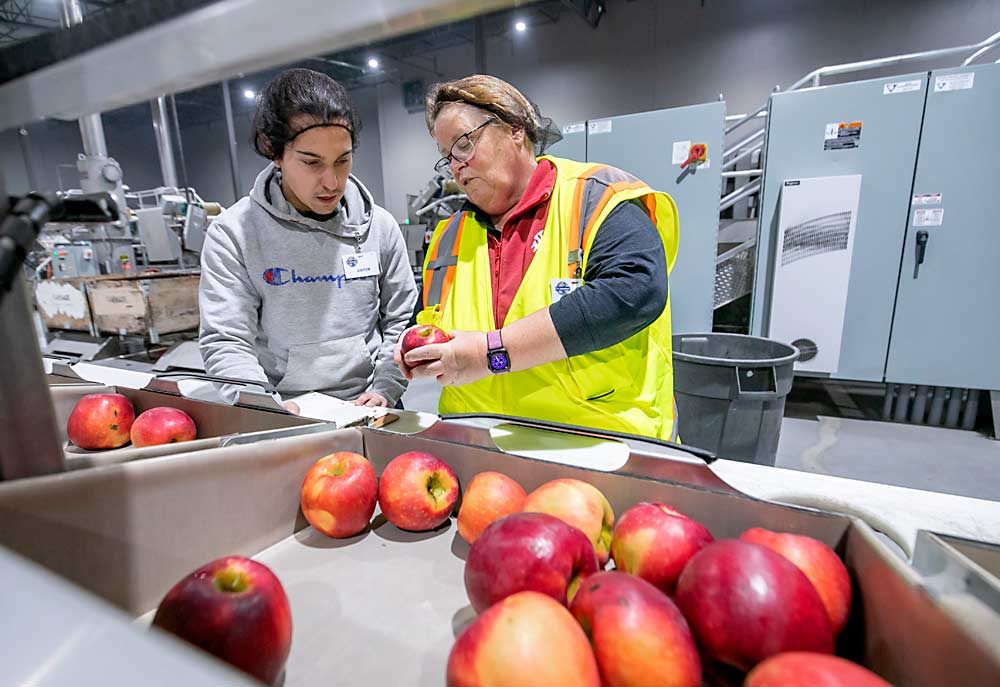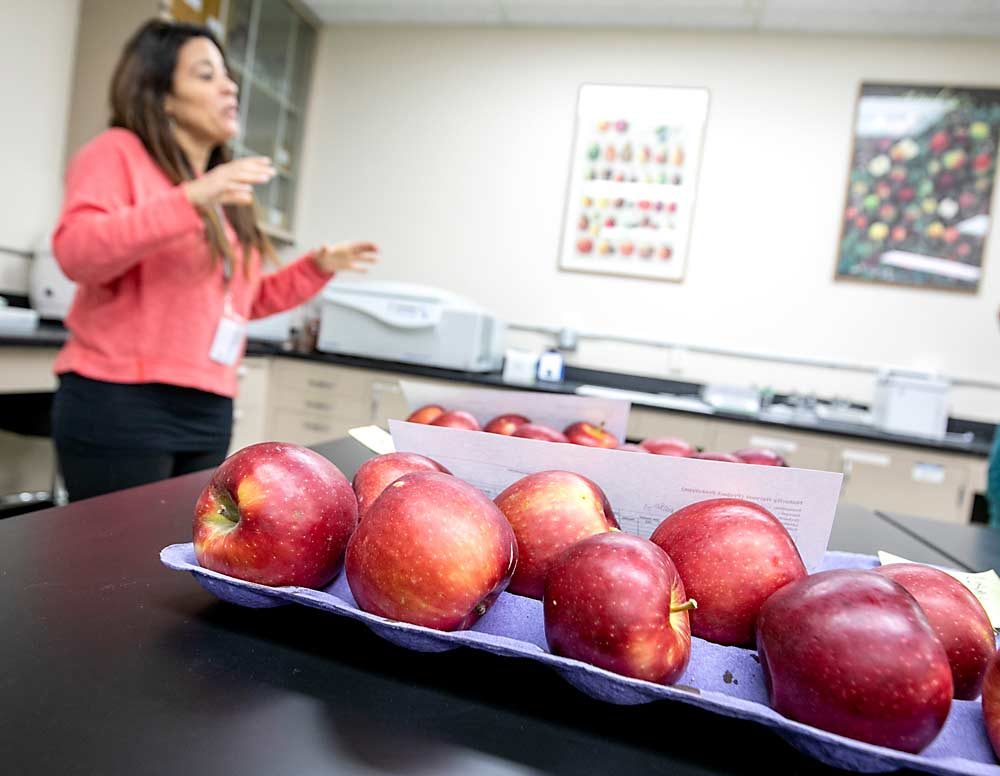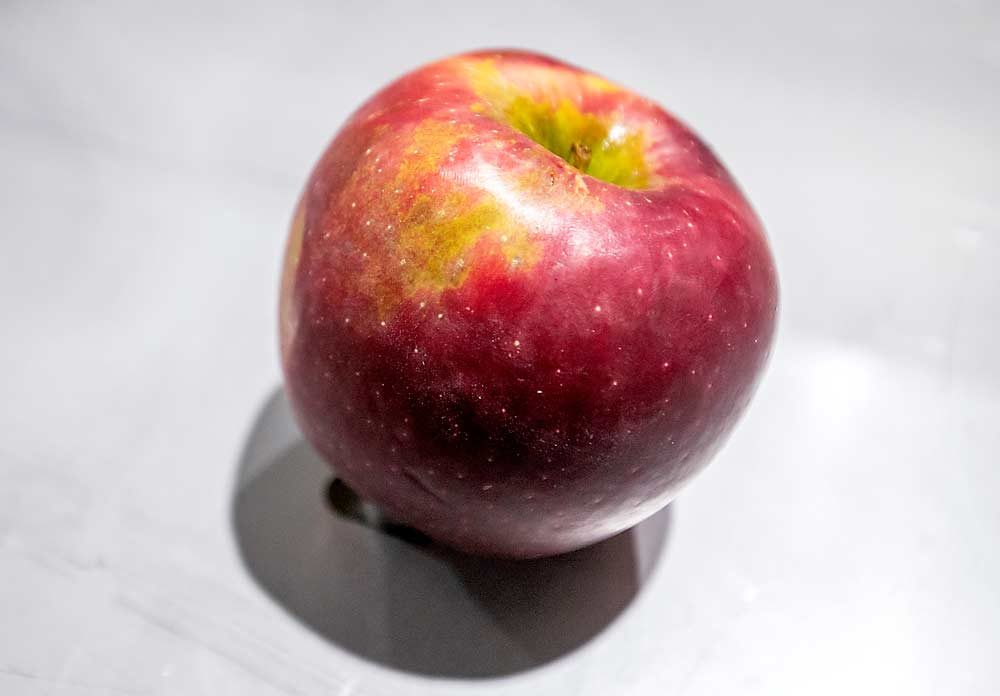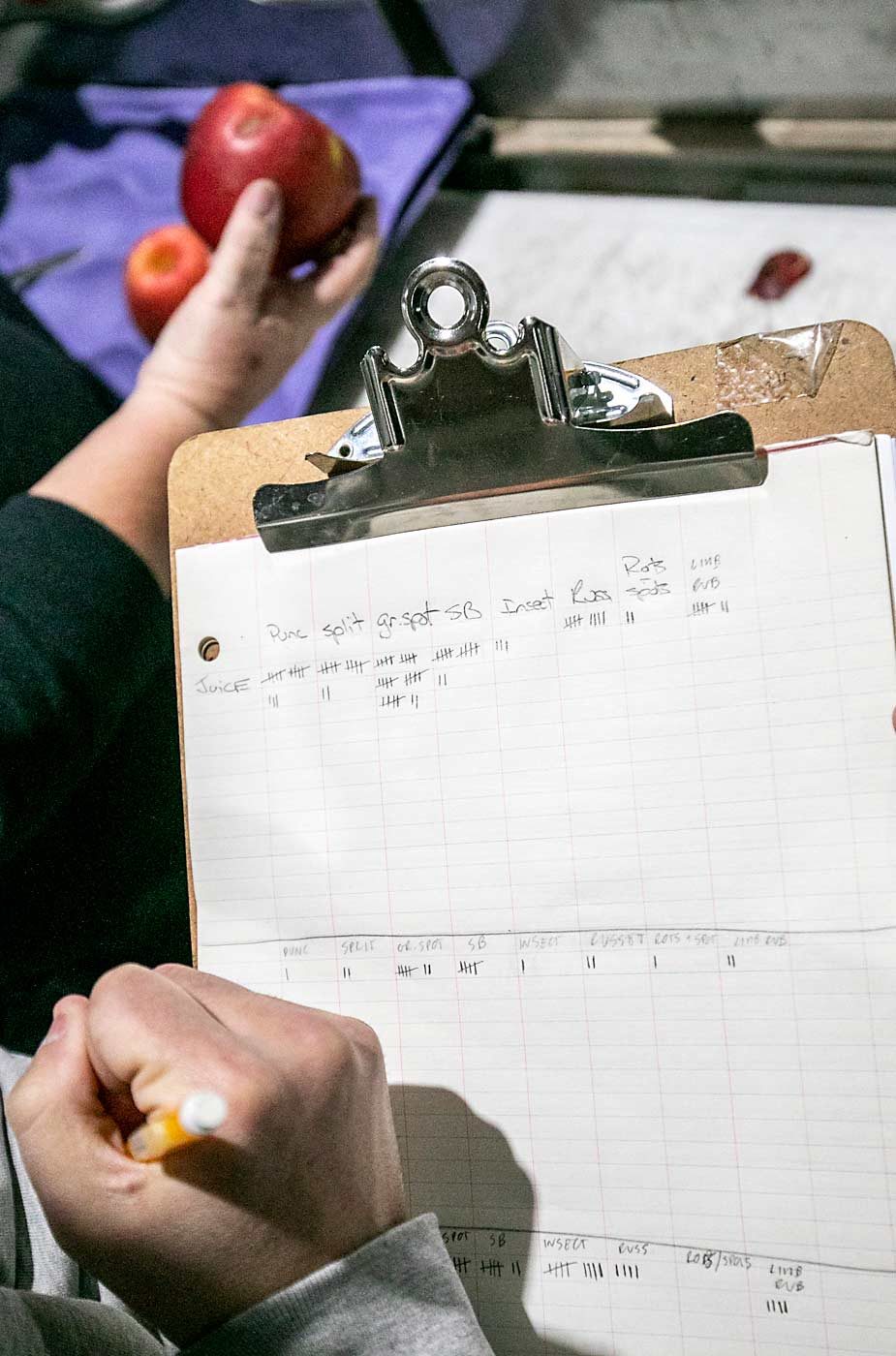
So, sales of Cosmic Crisp are evidently going pretty well.
What about the fruit quality?
That’s off to a good start, too, according to Carolina Torres, Washington State University endowed chair for postharvest research. The average packout among the warehouses visited in the fall by Torres and Karen Lewis, a WSU tree fruit extension specialist, was 78.3 percent.
“In any variety, that would be a great packout,” Torres said.

Torres joined WSU last summer and this packout survey was among her first projects related to the university’s new apple, she told growers at the Washington State Tree Fruit Association’s Annual Meeting. “This is my introduction into the WA 38 world,” she said.
The first packouts may have been even higher if optical sorters understood the fruit better, she said. Most of the electronic sorters have machine learning designed to grow more accurate over time. Sometimes, the team found high-quality fruit in cull bins, she said.
“It’s just a learning process for every packer,” she said.
Online:
Carolina Torres, Washington State University’s endowed chair for postharvest research, will post her postharvest WA 38 quality research results on the WSU Tree Fruit website at treefruit.wsu.edu. Also, the site includes an economic analysis of stem clipping for WA 38.
Meanwhile, packouts don’t tell the entire postharvest quality story, said Jon DeVaney, the association president. They represent fruit that shippers believe will fetch a high enough price to justify the cost of packing. The Cosmic Crisp is enjoying high demand due to rookie excitement, which may temporarily boost packouts. Among all varieties, fresh pack percentages in the low 70s are considered pretty good.
WSU and Proprietary Variety Management, or PVM, the company contracted to commercialize WA 38, anticipates an 85-percent average packout in the future, after trees have matured and growers and packers get more experienced, said Lynnell Brandt, president of PVM.
To measure postharvest quality, Torres quantified why fruit was falling short of the fresh-pack mark. She and her team individually analyzed 14,000 apples, enough for 11.4 bins, from seven Washington packers sending WA 38 on its first commercial pass through packing lines.

Limb rub and punctures, both forms of mechanical damage, were the most common cause of culls, at 29 percent, Torres said. Green spot, a calcium-related condition WSU researchers are still studying, followed at 16 percent. Splits, perhaps because of harvesting too late, were third at 7 percent.
At the conference, Lewis reminded producers to inform their crews to clip stems at the height of the apple shoulders to prevent punctures. They don’t need to point the tips of the clippers down into the stem bowl. To take even further precautions, use rounded clippers or try dabbing the pointy tips with a little epoxy.
Greasiness was another concern, said Torres and Lewis.
They didn’t quantify greasiness, due to the apple’s own natural wax, but it was a common complaint from some packers, while members of a technical advisory group put it among their top concerns, Lewis said. The condition happens to some degree in all apples, varying between year and variety.

Consumers probably won’t notice greasiness, because packers remove it and replace it with their own waxes. To mitigate it, chemical companies that make coatings recommended packers use higher brush speeds and colder dunk tank water, while growers and field representatives should mind harvest timing, Lewis said. The longer fruit hangs, the more prone to greasiness it becomes.
Torres and Lewis are continuing their research. The fall study included only third-leaf fruit released for commercial sales for the first time on Dec. 1, 2019. Second-leaf shipments began Jan. 1. •
—by Ross Courtney
Related:
—Cosmic Crisp soars at launch






Leave A Comment